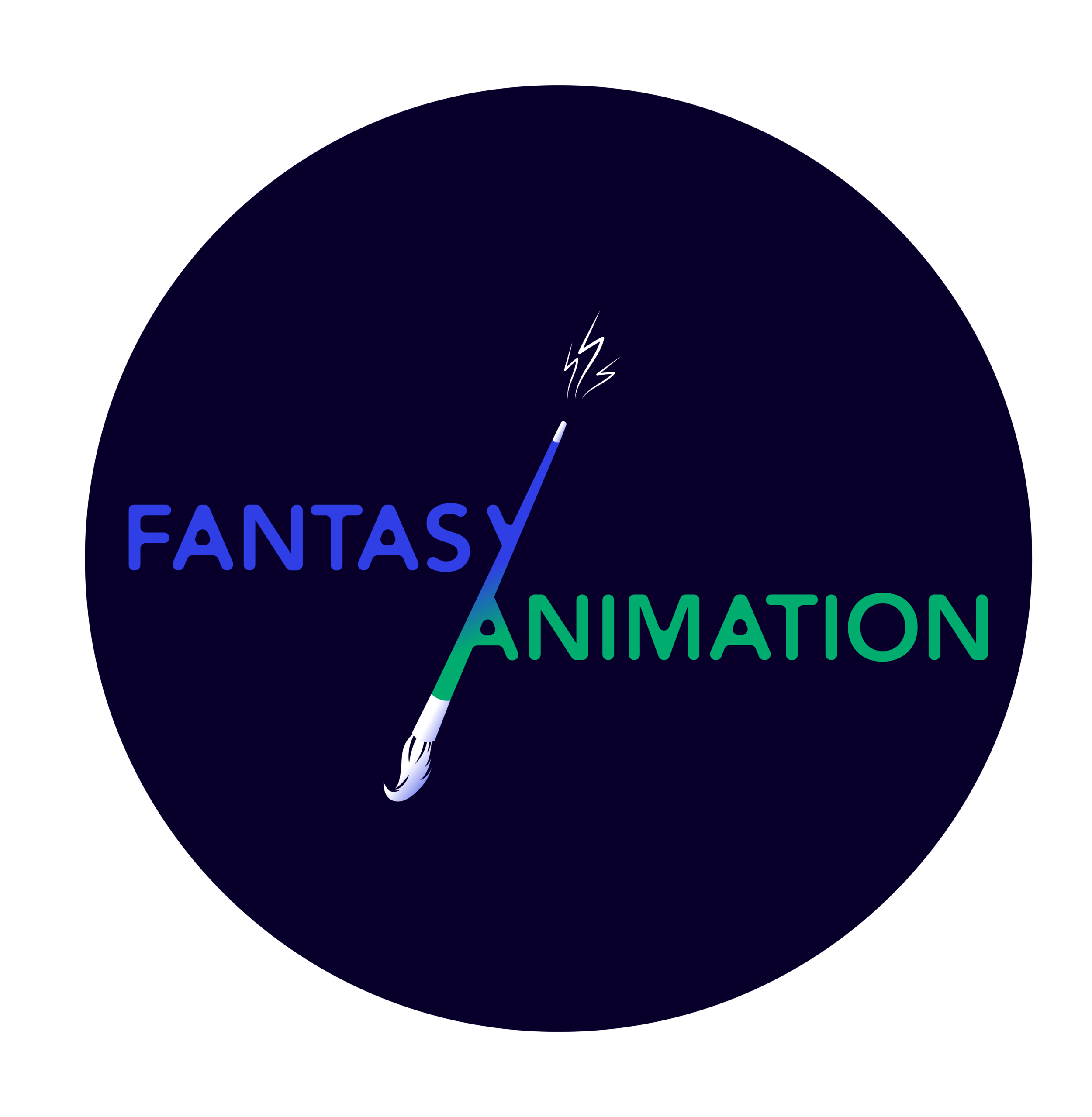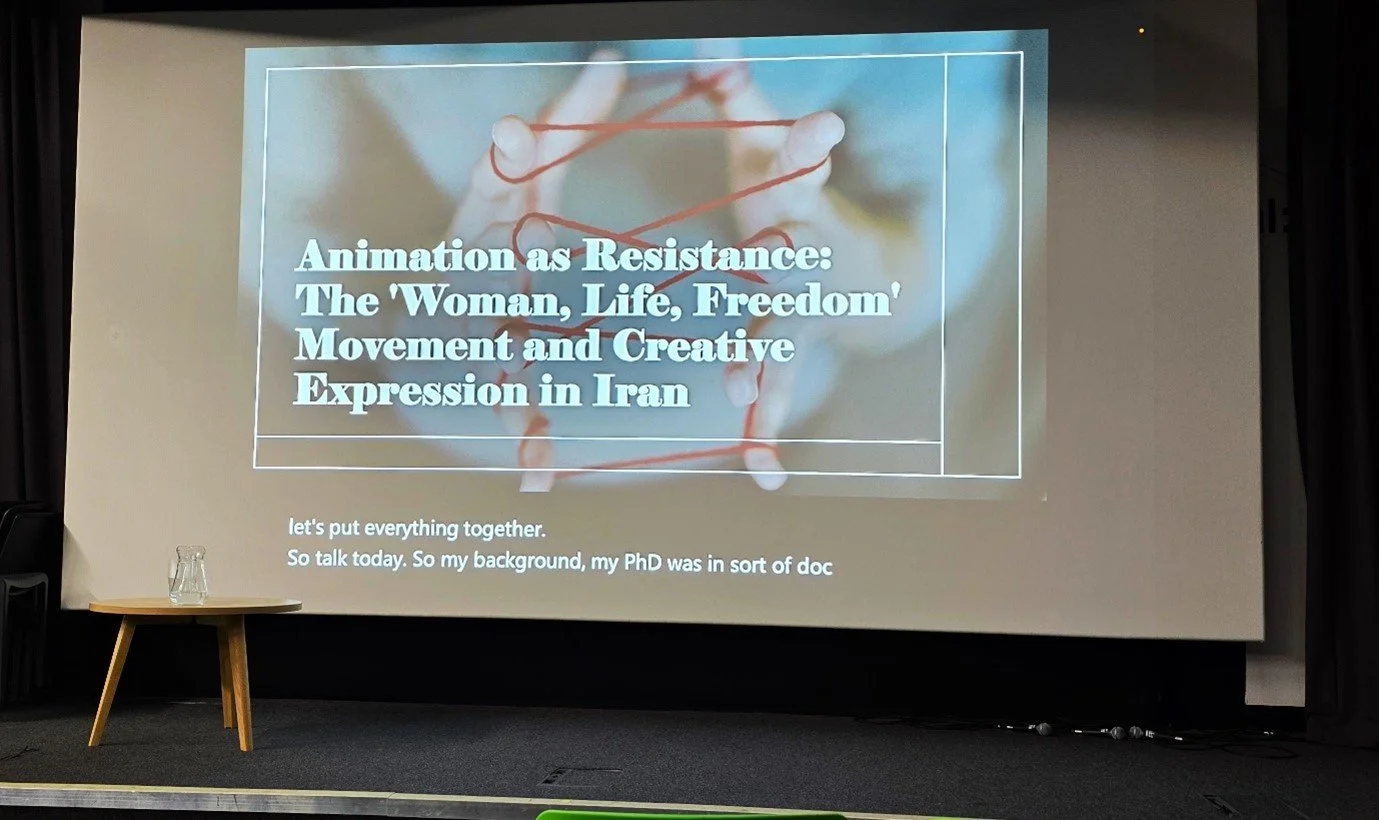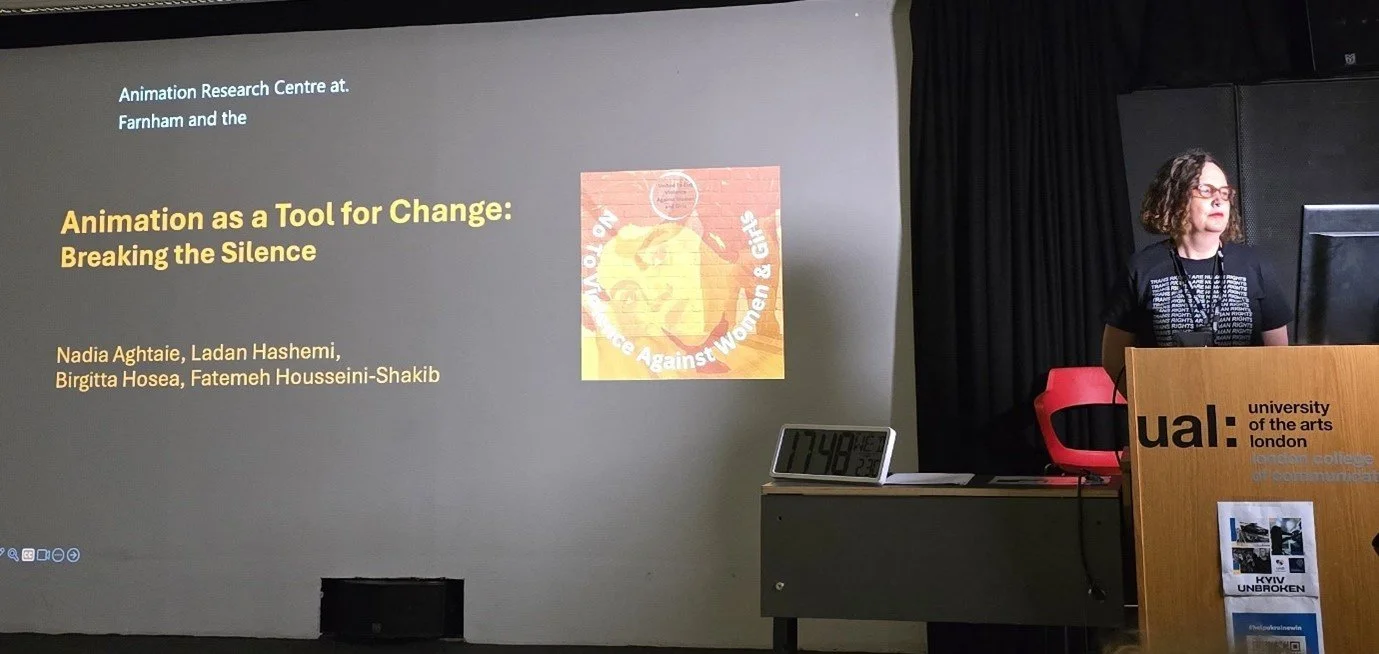Review: Society for Animation Studies (SAS) - 36th Annual Conference
The Society for Animation Studies (SAS), one of the world’s most well-known and popular international organisations dedicated to the study of animation history, theory and practice, holds an annual conference at locations throughout the world each year, where members present their recent research. The 36th Annual Society for Animation Studies conference took place between 7th-10th July 2025, hosted in Elephant & Castle, London, by the Screen School, London College of Communication (LCC), University of the Arts London (UAL). This year’s conference title was ‘Sustaining Animation’, and was inspired by UAL’s key values of climate, social and racial justice, and equality, diversity, and inclusion.
The conference brought together scholars, animators, students, practitioners, researchers, publishers, and academics from around the world, all working within the field of animation. It officially began on Monday, 7th July, with a warm welcome and an intellectually engaging keynote by Malcolm Cook, Associate Professor of Film at the University of Southampton (Fig. 2). His talk, titled “Animating Oil, Changing the Planet: Useful Animation in the Petroleum Industries,” explored four historical intersections between animation and the oil industry, framing oil as both a material and cultural product, and highlighting animation's role in visualising extractive capitalism. The day continued with three simultaneous morning panels: ‘Bad Animation’, which critically examined overlooked or controversial forms such as television and animated pornography; ‘Animated Documentary 1’, where presenters explored the medium’s capacity to preserve minority voices and oral histories; and ‘Motion’, which analysed animated movement from experimental and digital perspectives.
In the afternoon, parallel sessions covered a wide range of pressing topics. The ‘Artificial Intelligence’ panel looked at how AI is shaping animation labour, aesthetics, and ethics. ‘National Discourses’ addressed the cultural specificity of animation practices in regions like Ireland, Iran, North Korea, and Canada. Meanwhile, ‘Time, Metaphor, and Memory’ discussed animation’s role in preserving historical narratives and emotional resonance. The final sessions included a richly historical panel on ‘Pioneering Women in Spanish Animation’, a diverse aesthetics panel on visual style and cycles, and a vibrant set of micro-talks covering themes such as environmental ritual, animated hunger, 3D modelling in education, and even medical satire. Day 1 concluded with a clear demonstration of the conference’s thematic richness and global scope.
One of the highlights throughout the conference was the Special Interest Group (SIG) sessions, held daily during the lunch break. These informal gatherings created space for animators and researchers to discuss emerging challenges in both animation practice and theory, while also helping to strengthen connections, build networks, and share ideas in a friendly, collaborative environment. One of these sessions on the second day was about practice-based research animation in which supervisors, students, lecturers and animators discussed the challenges of doing practice-based research as part of their PhD or individual research projects, arguing how doing practice within an academic framework is still research without necessarily realising it.
Second day of the Conference began with a set of panels that reflected the field’s ongoing negotiation with technological change and historical reflection. ‘Artificial Intelligence 2’ examined the impact of real-time, AI-driven, and XR-compatible technologies on animation pipelines and artistic authorship. Topics ranged from creative disruptions in short film production to ethical uses of generative AI and the tension between automation and the artist’s touch. At the same time, the ‘Animation Histories’ panel traced the evolution of global animation cultures, with papers on the transmedial roots of Japanese animation, Marie Seton’s influence in the 1930s, and the challenges of archiving student animation at the RCA and beyond.
Mid-morning sessions followed with two rich panels. In ‘Animation and the Environment,’ presenters explored ecological storytelling across global contexts, from Jana Rogoff’s take on Eastern European sustainability narratives to Rayna Denison’s study of Studio Ghibli, and Christie Widiarto’s exploration of animism and advocacy. At the same time, ‘Animated Documentary 2’ brought together feminist, historical, and neurodiverse perspectives, with Sally Pearce, Anitha Balachandran, and Alex Widdowson examining ethical storytelling and Gunnar Strøm reflecting on animation’s affective power. Simultaneously, the first SAS Animation Screening showcased a curated programme of short works, from poetic pieces like Visible Mending and Cyclic to experimental visuals in Glitch Colorspace and Pink Pottery, celebrating the diversity of contemporary animation practice.
Highlight of the day was an inspiring keynote from award-winning British animator Joanna Quinn (Fig. 3), titled "Digital vs Pencil: The Importance of the Physicality of Drawing in Animation." Drawing from her experience on her Oscar-nominated film Affairs of the Art, Quinn reflected on the emotional and creative switching from traditional hand-drawn techniques to digital animation. Despite her attempt to replicate the organic quality of hand-drawn work using 2D software, she found the process became overly technical and disconnected from the physical joy of animating. Her talk examined what is lost when artists move away from the physicality of hand-drawn animation and she performed a live session of drawing figures and showing movements on the paper with simple lines. Her live drawing demonstration (Fig. 54) and film clips brought warmth, humour, and lived expertise to the conversation, setting an energising tone for the day.
In the afternoon, the focus shifted to material practice, identity, and care. ‘Stop-Motion 1’ highlighted the enduring appeal of handcrafted animation through case studies including Guillermo del Toro’s Pinocchio and analogue filmmaking in a digital age. The Representation panel explored race, queerness, and diversity in British and international animation, with standout contributions from Maliha Miriam (Fig. 5) and Omeiza ‘O’ Haruna (Fig. 6) talking about equality, diversity and inclusivity as well as racial stereotypes, and black British representation. Meanwhile, ‘Animation and Care’ addressed accessibility, well-being, and the ethics of creative education, with presentations on audio description, health environments, and the pedagogical legacies of figures like Jules Engel.
On the third day, more thought-provoking panels were presented, all centred around the conference’s core theme of sustaining animation through political, cultural, and environmental practices. The morning panels began with ‘Animating Anti-Racism’ (Fig. 7), where scholars explored how animation functions as a political tool and cultural witness. Melissa Friedling’s paper on Sabine Gruffat’s work examined unease as a mode of resistance, while Nerian Keywan spoke about nonsense and satire within the Palestinian context. Jane Cheadle’s case study of Disney’s Kizazi Moto highlighted international collaboration in African animation, and Robby Gilbert traced the legacy of early Black animators in New York. Simultaneously, ‘Stop-Motion 2’ turned attention to hybrid techniques and the risk-laden artistry of material media, with Miriam Harris and Simon von Wolkenstein unpacking the evolving role of AI. The ‘Animation and the Environment 2’ panel approached climate aesthetics and non-human narratives, from experimental ecologies to children’s television that integrates magic and technology.
The keynote speaker of the day was Michael Dudok de Wit, the Oscar-winning animator of Father and Daughter (2000) and The Red Turtle (2016), who delivered a talk titled ‘Animation and Ecological Awareness’ (Fig. 8). Framing his presentation around three key perspectives, Dudok de Wit discussed environmental sustainability in animation production, ecological themes in storytelling, and the role of artistic animation in nurturing ecological sensitivity. He reflected on animation’s capacity to engage our imagination and subconscious through symbolic language, arguing that subtle forms of artistic expression are just as essential to our environmental awareness as more overt messages. Drawing from his own experience in hand-drawn animation, he challenged the audience to consider how creative work can contribute to addressing urgent planetary concerns.
Midday sessions offered a wide thematic range. ‘Political Animation’ engaged directly with protest and resistance, featuring presentations on animation’s role in the Iranian “Woman, Life, Freedom” movement (Fig. 9) and an in-depth conversation about diaspora filmmaking with Maryam Mohajer and an engaging presentation of tools of propaganda animation by Mgr. Tereza Bochinová. The Boundaries of Realism panel took a more philosophical turn, from phenomenology in animated practice to the co-production journey of A Greyhound of a Girl (Enzo D'Alò, 2023). Meanwhile, the Chinese Animation panel focused on China’s evolving animation industry, covering distribution challenges, regulatory frameworks, and the creative use of AI in mini-series. Each session reflected both the global reach and critical urgency animating contemporary scholarship.
The day concluded with rich final panels. Sustaining Polish Animation offered a rare glimpse into Eastern European animation history through oral histories, archival studies, and methodological reflection. ‘Animation and Social Purpose’ showcased how animation serves communities from outreach in astronomy to projects addressing domestic violence in Iran and the UK. Highlights included UCA’s own Professor Birgitta Hosea, part of a powerful collaborative panel exploring animation as a tool for change (Fig. 10). The ‘Embodied and Disembodied Animation’ panel brought the conference to a close by grounding animated expression in the physical experience of the body, examining motion capture, traditional puppetry, and embodied sensory practices.
On Wednesday, SAS Annual General Meeting was also held with the board members in which key topics such as the SAS budget, special interest groups, student representatives, and the award committee were discussed. In the end, it was announced that Pittsburgh has been selected as the location for next year’s conference, which will be held in a hybrid format to accommodate both in-person and virtual participants (Fig. 11).
The fourth day of the conference opened with three insightful panels that demonstrated the growing intersection of animation with education, national identity, and formal experimentation. In Panel 10A, titled ‘Sustaining Animation: The State of Play in a Small Nation,’ speakers addressed the unique dynamics of Scottish animation, from female labour in games and animation industries to evolving educational approaches. Panelists, including Nichola Dobson and Lynn Love, offered grounded case studies, while Dan Castro's contribution proposed a playful manifesto for contemporary animation education.
Meanwhile, Panel 10B examined the role of television and online animation in shaping cultural narratives. Sam Summers’ talk on Cartoon Network UK traced how remix aesthetics reshaped legacy characters, while Aaron Borok applied Deleuzian theory to explore dimensionality in The Amazing Digital Circus. Panel 10C introduced innovative practice-based work, such as Diek Grobler’s exploration of pinscreen animation as a shadow-based storytelling method, and Katarzyna Żmuda’s reflective account of animation as a medium of absence.
The keynote session featured a rich conversation between David Sproxton, co-founder of Aardman Animations (Fig. 12), and Maliha Miriam from the London College of Communication. Framed as a reflective and forward-looking dialogue, the session explored Sproxton’s formative experiences in animation, his creative partnership with Peter Lord, and the distinctive cultural identity of Aardman’s early work. The discussion touched on the studio’s social commentary, its legacy within British animation, and Sproxton’s role as a cinematographer navigating the evolution of animation technologies. Channel 4’s archival holdings and Aardman’s transition to employee ownership were also addressed, framing important questions around sustainability, authorship, and the longevity of animation heritage.
Late morning sessions discussed the crossroads of AI, personal narrative, and sound. Panel 11A focused on the role of generative technologies in animation through a mix of theoretical and practice-led presentations. From Max Hattler’s work on AI abstraction in higher education to Dr Nea Ehrlich’s talk on aesthetics and seriality, this panel addressed the disruptive and democratic potential of AI. In Panel 11B, contributors tackled Ethnographic and Autobiographical Animation, showcasing the autobiographical power of stop-motion, self-representation, and feminist aesthetics. Running parallel, Panel 11C offered auditory explorations, linking anime openings and electronic dance music to emotion, memory, and narrative structure.
Afternoon panels maintained this momentum. Panel 12A focused on ‘Environmental Sustainability’, with Maike Sarah Reinerth and Cristina Formenti interrogating the tension between aesthetics and ecological impact, particularly within stop-motion. Complementing these themes, Panel 12B introduced further experimental work, including Jill Gibbon’s collaborative drawing practices around security and Joe Evans’ revival of forgotten animation artefacts through lantern slides. The final panel of the day featured SAS Animation Screening 2, with films ranging from poetic reflections on post-colonial identity to environmental storytelling. Highlights included Red Dress. No Straps by Maryam Mohajer, Vision by Çağıl Harmandar, and Dancing on the Flying Carpet by Leila Honari. Many films foregrounded memory, place, and ecological or political struggle, adding richness and texture to the academic discussions of the day.
Although the official conference proceedings concluded on Thursday, participants were invited to join an optional cultural activity on Friday: a private guided tour of London’s Cinema Museum. Located in the historic Lambeth Workhouse, a building associated with Charlie Chaplin’s childhood, the museum offered a unique glimpse into the material history of cinema. The extensive collection of artefacts, memorabilia, and projection equipment provided a fitting close to the conference. It allowed participants to reflect on the evolution of moving images in a richly atmospheric setting. This informal gathering also encouraged further networking and discussion in a relaxed and historically resonant environment.
**Article published: July 25, 2025**
Biography
Anahita Fazaeli is a second-year PhD student at UCA, focusing on the representation of ethnic minority groups in children's animations, with a specific case study on Postman Pat (1981–2017). Born in Iran, Anahita earned her BA in English Language and Literature and her MA in British Cultural Studies before moving to the UK. She is also an associate lecturer at UCA, supervising film production students and delivering lectures on topics like cinematic representation, race, ethnicity, and identity in animation. Her research interests lie in the socio-political and ideological readings of children's literature and cinema.












